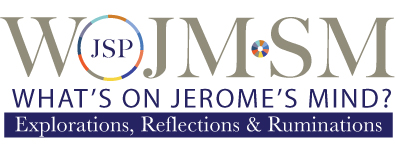- Home
- What’s New in “The 5 Behaviors of a Cohesive Team” by Patrick Lencioni (Wiley Publishing)?
What’s New in “The 5 Behaviors of a Cohesive Team” by Patrick Lencioni (Wiley Publishing)?
Trust (Vulnerability)
Boot camps. Retreats. High ropes. Low ropes. Trust assessments. Trust activities (like being led while blind-folded). World cafes. These are all tools in our facilitation toolbox we’ve used to help participants become acquainted so they can reduce interpersonal friction to relate authentically and to coalesce as members of a group.
The 5B model’s focus on vulnerability distinguishes it and is likely one reason it takes some groups time to come to grips with the five behaviors.
The focus on vulnerability-based trust is novel.
Productive Conflict (Conflict-as-Asset)
In our work, we emphasize giving and receiving feedback. Communication models abound that help people get past expressed or unexpressed issues, so they can hear and honor what others are saying.
One “stages model” of team development outlines how teams move from forming to storming to norming to performing. A high-performing team is comprised of a small number of people with complementary skills, equally committed to a common purpose and each other.
The 5B model’s focus on embracing conflict and turning it into an asset is a significant contribution to making trust happen.
Lencioni provides guides to transform “conflict-as-liability” into “conflict-as-asset.” He calls this “healthy disagreements.”
Commitment (Buy-In)
In our work, we’ve used Gallup’s approach to disengaged and self-directed employees. We’ve found the concepts to be very useful, and our clients declared them to be incredibly insightful. Managing disengaged employees requires a top-down management approach, whereas managing self-directed ones requires methods that allow for autonomy. A self-directed employee is a committed employee.
And, who hasn’t struggled with getting group consensus and having members of the group honor it?
However, the 5B model focuses on achieving “buy-in,” not on building “consensus.”
According to Lencioni, the two most significant causes of a lack of commitment are the desire for consensus and the need for certainty. For him, everyone does not have to agree initially, and outcomes may be uncertain. But because of trust (the first behavior) and productive conflict (the second behavior), team members “commit” to decisions. Team members “buy-in” because others have honored their expressed concerns (productive conflict has happened). A “we-space” exists that safely holds the team members’ vulnerabilities.
Accountability (Accountability-as-a-Buddy-System)
In our work, accountability is a crucial trust behavior. While other vital behaviors include straightforwardness, openness, and reliability, each facilitator has their favorites.
Here 5B’s principal contribution is accountability-as-everyone’s-responsibility. Each of us must hold each other accountable. What the model proposes is an accountability-as-a-buddy-system.
Results (Individual-Organizational Alignment)
In our work, we highlight the importance of aligning the expectations of an employee with the desired outcomes of the organization. We’ve had excellent client success with the Strategic Alignment Survey.
In the 5B model, if the team is cohesive, there’s no divergence between individual work activities and organizational results. The model highlights the importance of individual-organizational alignment.
What’s the 5B’s Appeal?
The model’s appeal is its ability to distill multiple approaches into something like a mantra – vulnerability, healthy disagreements, buy-in, accountability-as-a-buddy system, and alignment of individual and organizational expectations.
Also, the model’s assessments and exercises provide efficient ways to identify and address issues. The model also comes with well-curated facilitation materials.
Hard, But Rewarding Work
Keep in mind that this work is hard because we are asking and nudging people to change their behavior and to shift their mindsets from being reactive to being strategic and from being self-centered to group-oriented.
The model promises that if we’re willing to do the work, we’ll be part of a cohesive team in a supportive and nurturing work environment that is fulfilling its organization’s mission and vision.
Contact if you’d like to develop the behaviors of a cohesive team.

